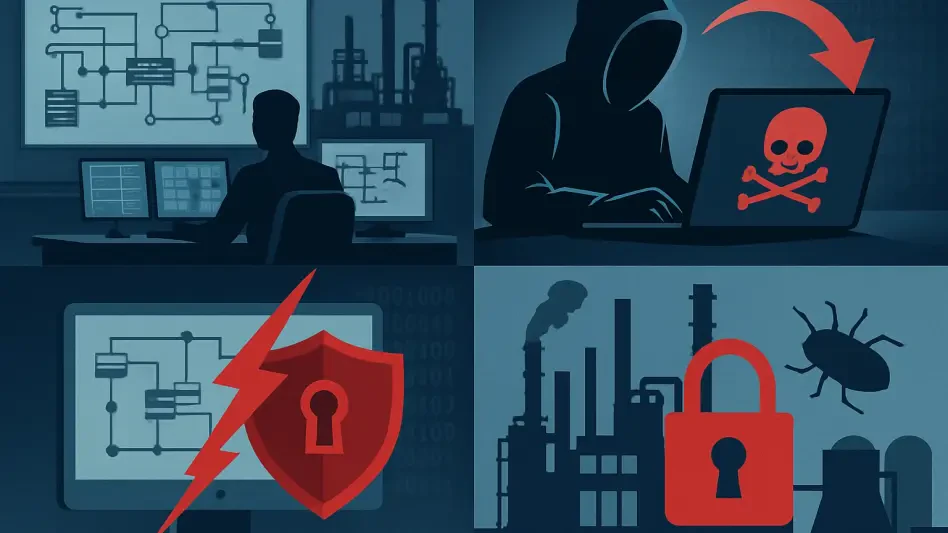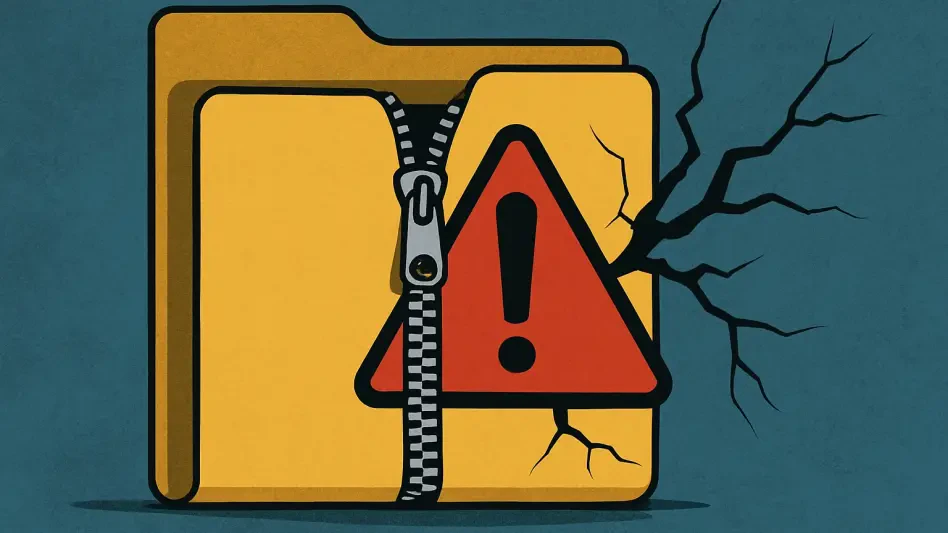The digital landscape in 2025 is under siege, with ransomware attacks escalating at an alarming rate, and one name stands out among the perpetrators: Akira. This ransomware group has reportedly extorted a staggering $244 million since its emergence, according to the latest FBI advisory. As organizations across the globe grapple with the devastating consequences of these attacks, understanding the mechanics behind Akira’s operations and the defenses needed to counter them becomes paramount. This review delves into the technology and tactics driving Akira’s success, evaluates their impact on businesses, and explores strategies to mitigate this persistent threat.
Understanding the Rise of Akira Ransomware
Akira ransomware has rapidly carved a notorious reputation within the cybersecurity realm, emerging as a formidable player since early 2023. The FBI reports that this group has amassed approximately $244 million in ransom payments, positioning it as a significant threat, though still behind other giants like Clop, which has extorted over $500 million since its inception. The scale of Akira’s financial haul underscores the lucrative nature of ransomware and the urgent need for robust defenses.
This group’s ascent reflects a broader trend in the ransomware ecosystem, where attackers capitalize on systemic weaknesses in organizational security. With ransomware now a pervasive risk across all sectors, Akira’s activities highlight the critical importance of staying ahead of such threats. Their ability to exploit basic vulnerabilities reveals a gap in cybersecurity preparedness that demands immediate attention.
Dissecting Akira’s Attack Mechanisms
Leveraging Known Weaknesses
Akira’s strategy often hinges on exploiting known vulnerabilities, many of which have been documented for over a year, as noted by threat intelligence analysts. These flaws, often found in outdated software or unpatched systems, serve as easy entry points for the group. The persistence of such vulnerabilities points to a troubling lag in security updates across many organizations.
The significance of these lapses cannot be overstated. Basic security oversights, such as failing to apply patches promptly, provide Akira with opportunities to infiltrate networks with minimal effort. This reliance on exploited weaknesses underscores the need for a proactive approach to vulnerability management to close these gaps before they are weaponized.
Simplicity in Attack Execution
Beyond exploiting known flaws, Akira employs straightforward yet highly effective techniques like credential stuffing and brute force attacks. Experts describe these methods as “boring” due to their lack of sophistication, yet their success rate remains alarmingly high. The reason lies in widespread poor security hygiene, including weak passwords and inadequate access controls.
These rudimentary tactics continue to work because many organizations neglect fundamental protections. The ongoing effectiveness of such basic approaches serves as a stark reminder that cybersecurity does not always require cutting-edge solutions—sometimes, reinforcing the basics can thwart even determined adversaries like Akira.
Assessing the Scale and Impact of Akira’s Reach
Akira’s operations have left a profound mark, with financial losses reported at $244 million, signaling a major blow to affected businesses. This figure, updated through late September by the FBI, illustrates the severe economic toll of their campaigns. Beyond monetary damage, the operational disruptions caused by these attacks can paralyze businesses for extended periods.
No sector is immune to Akira’s targeting, as ransomware has evolved into an inevitable business concern. From small enterprises to large corporations, and spanning industries like healthcare and finance, the threat looms large. The indiscriminate nature of these attacks amplifies the urgency for comprehensive defensive strategies across all organizational levels.
The latest FBI advisory emphasizes the critical need to address this menace promptly. With updates reflecting ongoing monitoring of Akira’s activities, the advisory serves as a call to action for security teams worldwide. The widespread impact of this group necessitates a unified response to curb their influence and protect vulnerable entities.
Real-World Fallout from Akira’s Campaigns
The consequences of Akira’s ransomware attacks extend far beyond financial losses, often resulting in significant operational downtime for targeted organizations. Businesses face halted operations, loss of customer trust, and extensive recovery efforts, all of which compound the initial damage. These disruptions can have a cascading effect on supply chains and service delivery.
Particularly vulnerable sectors, such as healthcare and critical infrastructure, suffer devastating outcomes when hit by ransomware. In these industries, an attack can disrupt life-saving services or compromise national security, highlighting the broader societal risks. The potential for such severe repercussions demands heightened vigilance and specialized defenses tailored to high-stakes environments.
Learning from attack patterns offers valuable insights for fortifying defenses. Expert analysis of Akira’s methods reveals consistent exploitation of common security gaps, providing a roadmap for mitigation. Understanding these real-world implications equips organizations to anticipate and counter similar threats with greater efficacy.
Building Defenses Against Akira’s Threat
Core Protective Measures
The FBI outlines several essential steps to prevent ransomware attacks, starting with prioritizing the remediation of known exploited vulnerabilities listed by CISA. Additional recommendations include enabling phishing-resistant multifactor authentication and maintaining tested offline backups. These measures form the foundation of a resilient security posture.
Cybersecurity experts concur that these basics are non-negotiable for any organization aiming to protect itself. While Akira may employ advanced tools at times, their success often stems from fundamental lapses. Implementing these core recommendations can significantly reduce the likelihood of falling victim to such attacks.
Enhancing Security with Advanced Tactics
Beyond foundational defenses, experts advocate for strengthening network perimeters through measures like securing VPNs and firewalls, enforcing SMB signing, and disabling outdated protocols. These advanced steps add layers of protection that can deter or delay attackers. Reducing exposed services, such as RDP, further minimizes the attack surface.
Practical actions, such as enforcing strong password policies and maintaining robust incident response plans, are also critical. Continuous security awareness training, integrated into daily operations rather than limited to annual sessions, addresses the human element. Empowering employees to recognize and respond to threats enhances overall organizational resilience.
Obstacles in Countering Akira’s Persistence
Defending against Akira presents significant challenges, primarily due to the group’s reliance on basic attack methods that exploit widespread security gaps. Weak credentials and poor configurations remain prevalent issues, allowing attackers to gain access with minimal resistance. Overcoming these persistent vulnerabilities requires a cultural shift in how security is prioritized.
Another hurdle lies in the sheer volume of vulnerabilities that organizations must address. Patching every flaw immediately is often impractical, necessitating a risk-based approach to focus on mission-critical systems and trending threats. This prioritization is essential to manage limited resources effectively against an evolving threat landscape.
Sustained investment in both technology and employee training is vital to improve cybersecurity hygiene. While tools and protocols form the backbone of defense, human error remains a common entry point for attackers. Addressing these challenges demands ongoing commitment to education and infrastructure upgrades to stay ahead of groups like Akira.
Looking Ahead at Ransomware Evolution
The trajectory of ransomware threats like Akira suggests a continued reliance on basic techniques, though evolution toward more sophisticated methods remains a possibility. As attackers adapt to countermeasures, organizations must anticipate shifts in tactics and prepare accordingly. Staying informed about emerging trends is crucial for proactive defense.
Treating ransomware as a constant business risk rather than a remote possibility is essential for long-term resilience. This mindset shift encourages sustained investment in cybersecurity measures and fosters a culture of preparedness. Organizations must integrate security into their core operations to withstand future threats.
Global collaboration and policy measures offer potential avenues to disrupt ransomware groups’ financial operations. Strengthened international efforts to track and dismantle these networks could reduce their impact over time. Collective action, combined with individual organizational defenses, represents a comprehensive strategy to combat this pervasive danger.
Reflecting on Akira’s Threat and Moving Forward
Looking back, the review of Akira ransomware revealed a group that amassed $244 million through exploiting basic security lapses, causing widespread disruption across industries. Their reliance on straightforward tactics exposed critical gaps in organizational defenses, underscoring the urgent need for both fundamental and advanced protective measures. The real-world consequences of their attacks served as a sobering reminder of ransomware’s devastating potential.
Moving forward, organizations should focus on actionable steps to bolster their security posture, starting with the FBI’s core recommendations and extending to advanced network protections. Investing in continuous employee training and fostering a culture of vigilance will be key to mitigating human error. Additionally, exploring opportunities for global cooperation to disrupt ransomware financing can amplify individual efforts, paving the way for a more secure digital future.








